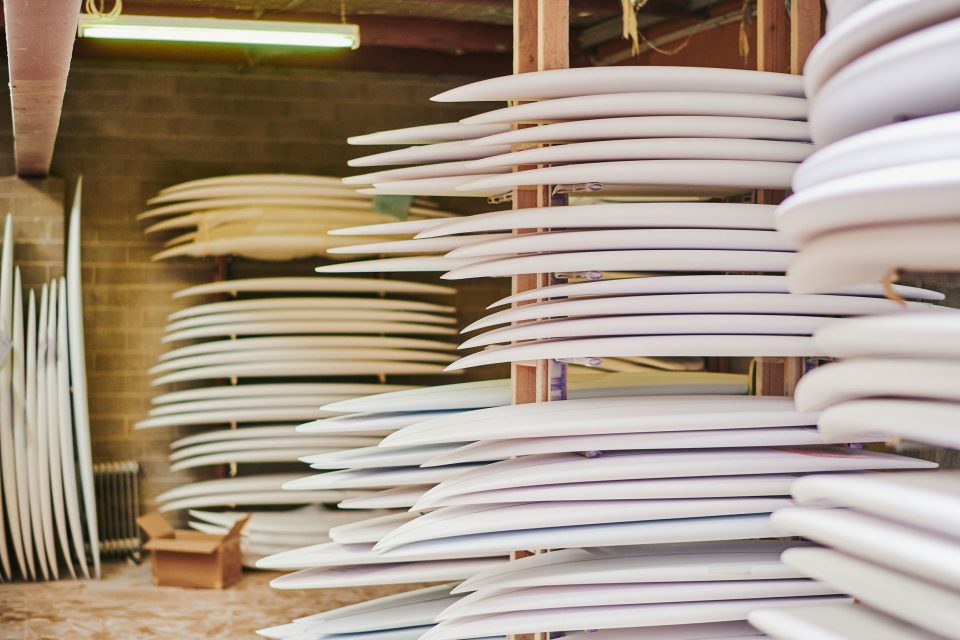In 1981, Mel Hayhoe and Drew Down decided to enter the world of manufacturing. Today, they run Onboard Industries, the Australian surfboard powerhouse that handles the likes of Channel Islands, Tokoro, Chris Christensen, Town & Country and Aipa. They also distribute soft-tops, skateboards and skincare. Their focus on quality and customer service has made them a formidable force in surfing hardware. And they keep pretty busy.
They have multiple stores under the “Onboard Store” moniker: one in Mona Vale, one in Byron Bay; and three throughout Bali: Seminyak, Canggu and Padang. Each store is designed to deliver a tailor-made experience that fits into that community. Best of all, they’ve stayed true to their hardware-first directive while so many other surf outlets divert their focus to clothing — eventually going full boutique or chasing down shopping malls or taking their brand to the runways.
To learn more about Onboard Industries — when it started, who runs it, how it operates, and some other fun facts about surfboard manufacturing in Australia — we rang up Mel.
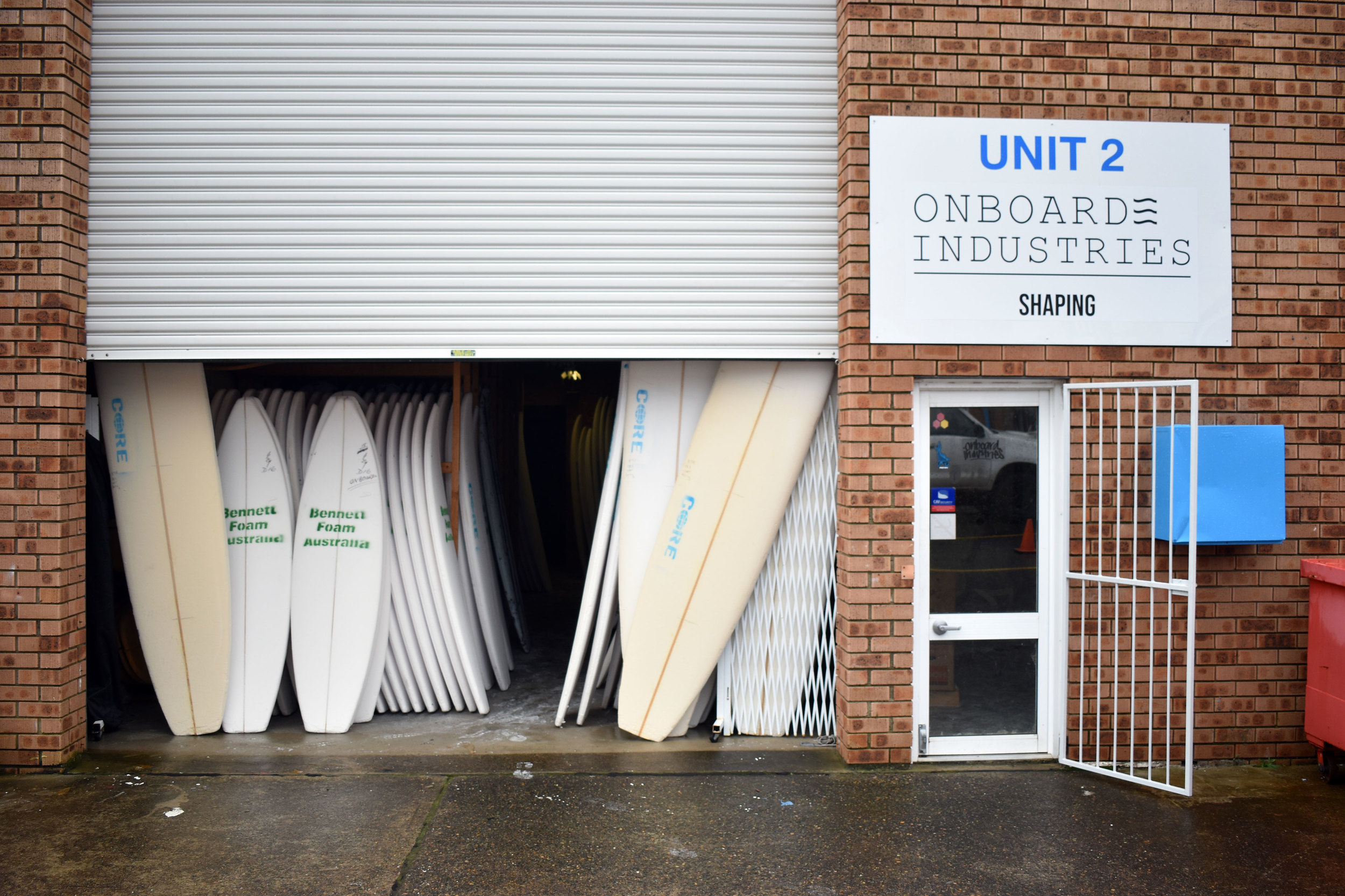
Surfline: What was the deciding factor that led you to starting Onboard Industries?
Melanie Hayhoe: Well, initially we were Insight Surfboards, which started with Greg Webber and Andrew Down. That was our first brand, and then along came Channel Islands. Drew was on a trip to California when he saw this kid surf, thinking, “This kid is something else! His surfing is incredible!” The kid’s name was Kelly Slater. Drew saw that Kelly was riding an Al Merrick and sent a FAX (yes, a FAX) to Al, we sealed the distribution, and the rest is history — a very good history — and we still hold a strong relationship with them some 30 years later.
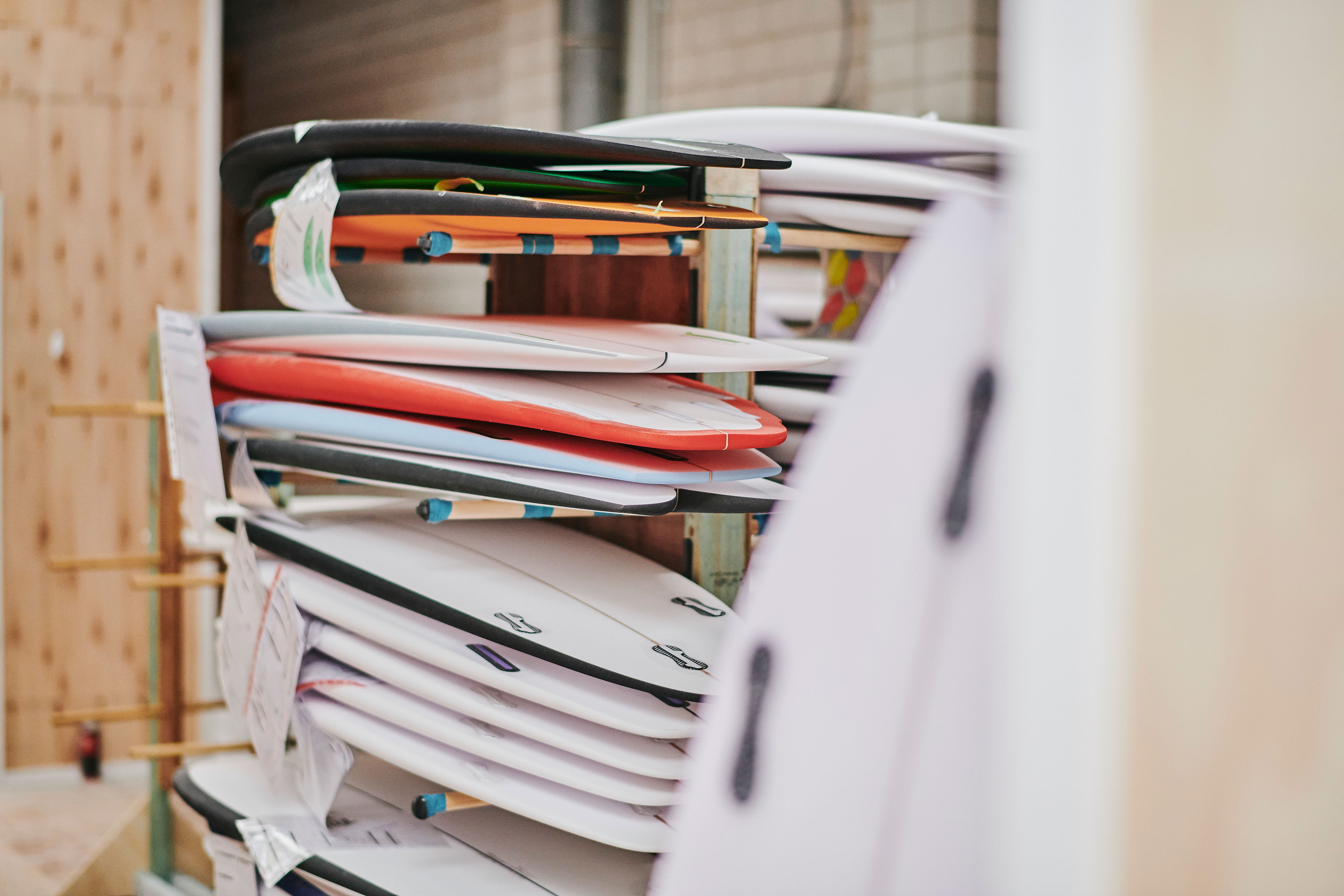
Did any brands exceed your expectations?
Well, they have all come into their own, and I still have the old, handwritten books of the numbers we used to do. At the time we were doing around 80 Insight boards and 10 Channel Islands boards a week. Bit of a flip now [laughs]. After distributing CI, we felt we could add more to the fold — Simon Anderson, Maurice Cole, Rod Dahlberg — and between them we had some solid names as teamriders. Hence, the change of the company name from Insight Surfboards to Onboard Industries Pty Ltd. Currently our brands are Channel Islands, Chris Christenson, Catch Surf, Town & Country, Tokoro, Salt & Stone, Aipa, & Slide Skateboards… But brands come and go, go and come back.
How do you recruit new labels?
It’s all about reaching out to new labels and telling them our story, but without sounding like a you-know-what. Most people know our story, though, and a lot of our new labels have actually approached us to be their distributor.
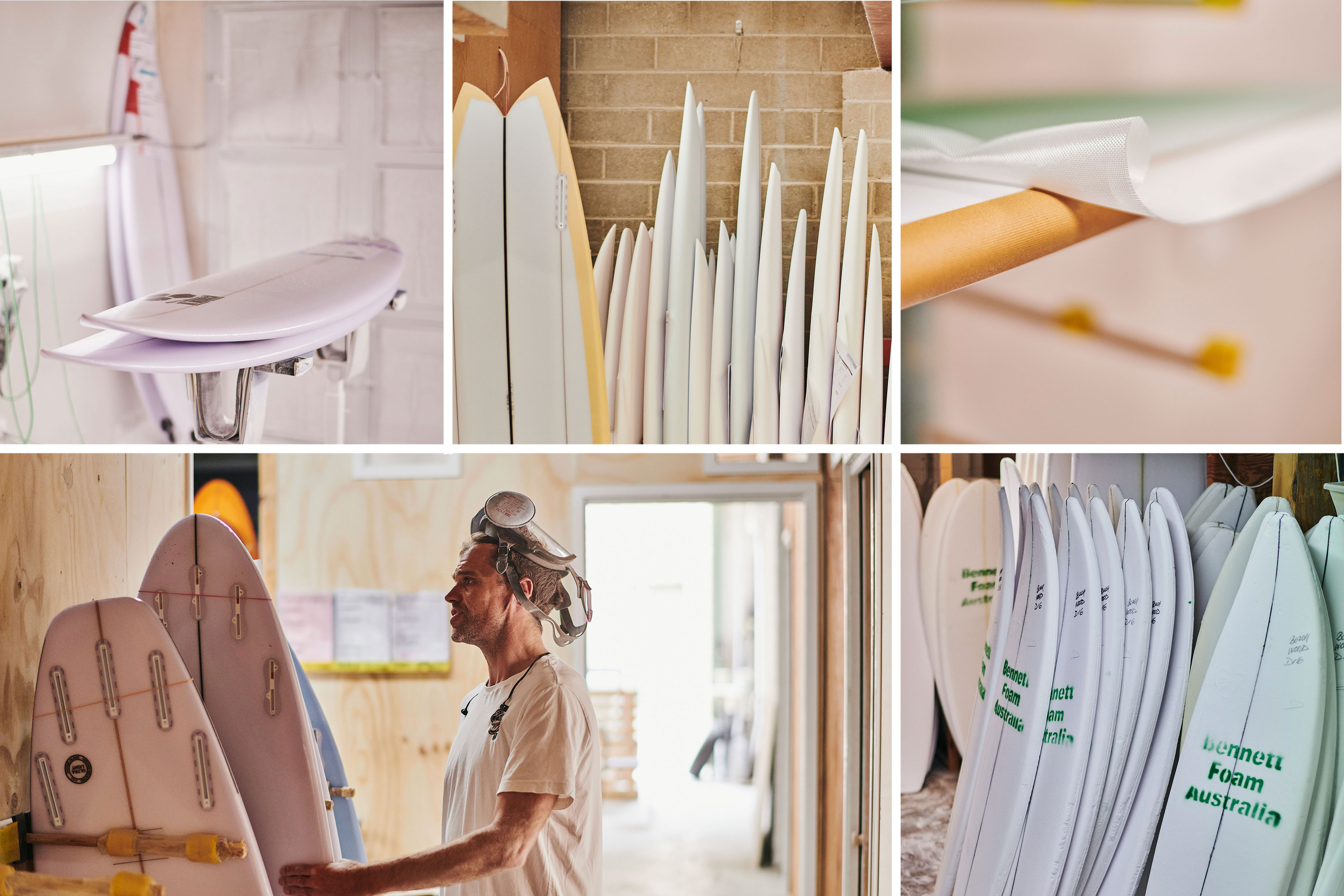
How many employees do you have and how much space do you take up?
In Australia, we have around 30 employees including contractors. We have approximately 600 square meters in retail space and twice that in production (factory space).
Do you oversee the entire board building process, from blanks to finished boards? Or do you outsource?
We look after the complete process, which is super important! We don’t manufacture every board in our own glassing factory, though. There are several contractors that we’ve worked alongside for years and years, so our relationships are solid. They’re really friendships.
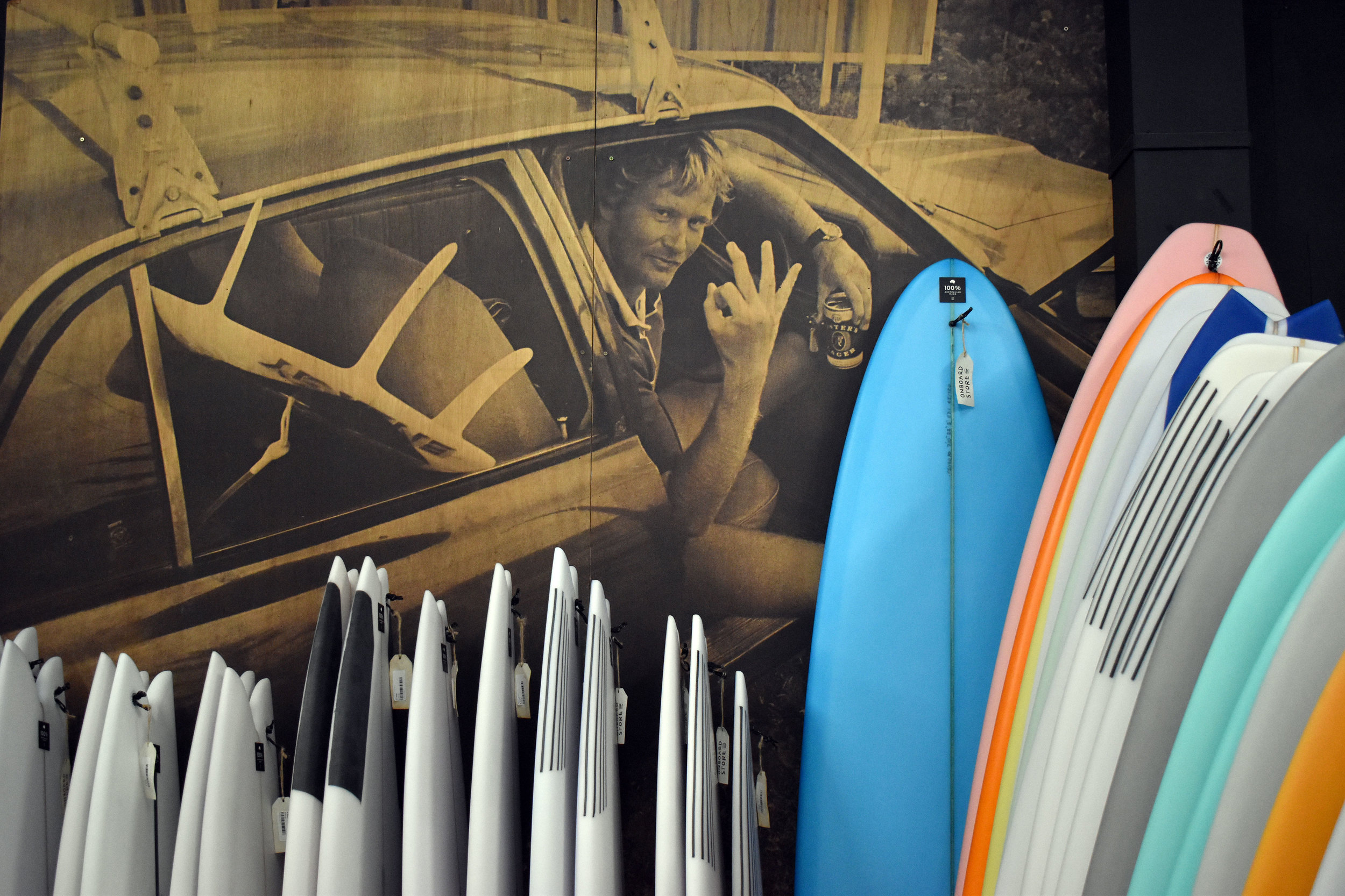
Photo: Steve Baccon
What made you decide to take on retail, on top of manufacturing?
We always had a small retail shop in our Mona Vale HQ, our tiny factory where we started out on Bassett Street. Actually, Gorilla Grip had just started out, too, and they were in the factory opposite of us. So, we always had a small retail section, and the rest followed by default. Now we have our store in Mona Vale and one in Byron Bay, and four stores in Bali.
Are any of the shapers coming to Australia to shape anytime soon?
Britt Merrick of Channel Islands usually comes out each year. And I believe Chris Christenson is heading out this way in November, but let’s see what happens. As you know, travel restrictions have played havoc.
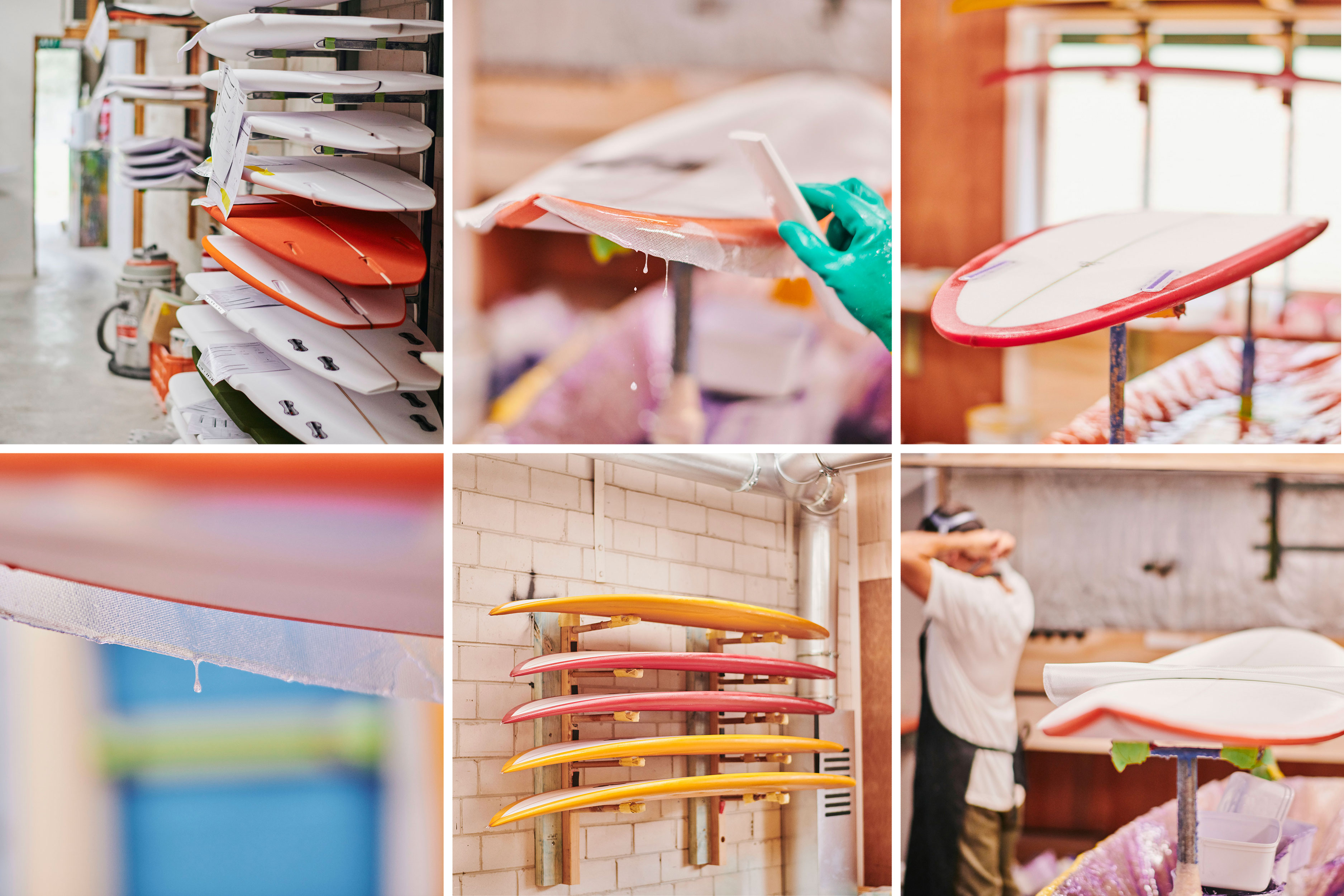
How many boards do you pump out in a week?
None of ya business! [laughs] Kidding, anywhere between one and 200.
What are the biggest changes you’ve seen in surfboard manufacturing since you started?
The biggest change was the introduction of the CNC cutting machines. At first everyone was freaking out, saying they’re not handmade anymore blah blah blah… These machines just create a more accurate board, and they’re still finished off by a shaper. The other one was FCS going from set fins to plugs. I always remember my sanders at the time saying, “Nah, this is too hard.” Now if you give them a board with glass-on fins it gets pushed to the back of the line. I personally was so happy when most production was coming out with FCS. We used to get solid orders from Japan, and I had to pack all the boxes. Sometimes a shipment of 50-100 boards, all with glass-on fins. Torture.
COVID has been a cruel mistress, but the surf industry saw a bit of a windfall, correct?
Yes, in some ways I do feel a real sense of guilt. The surfboard industry thrived, because everyone was surfing. Initially, we didn’t know what was going to happen with COVID, so I put half my staff on annual leave, then after two weeks they all came back. We’ve been fortunate, like most of the surf industry, but we always try our best to give a little back — like free coffee and wax at our local coffee stores. A little gesture always goes a long way.
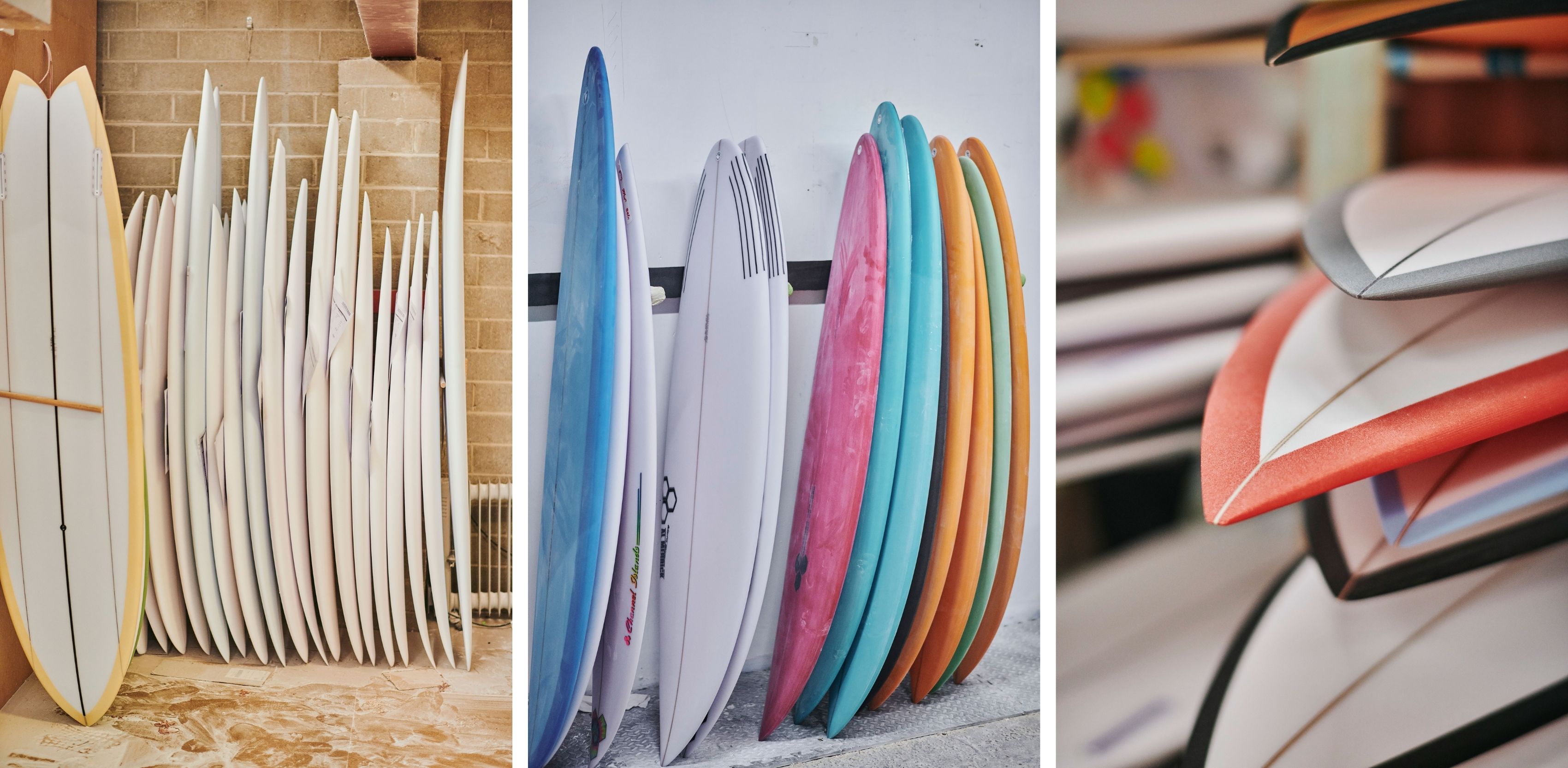
Photos: Onboard Industries
What’s been the biggest challenge in growing Onboard?
Making sure there is coffee, tea and milk in the kitchen and icy-cold Balter beers in the fridge [laughs]. Cash flow can always be tricky. I look after all our suppliers and pay them on time, so it’s all a balancing act but we seem to pull it off. One of my favorite sayings is “Everything will always work out.” Also, getting our heads around social media and the impact that can have on a business. We’ve learned that having control of it with regional accounts is key to ensuring we’re communicating what’s happening with our brands down here.
Highlights? Lowlights?
Creating a clothing brand from a surfboard brand, Insight, that was a fun adventure. We learned a lot and lost a lot, but I have no regrets. There have been so many highlights, most weeks have a highlight. Lowlights? Well, they are just lessons.
Any challenges along the way that you thought might sink you?
Plenty of challenges, but that just makes a business stronger. Again, just life lessons. I do remember, though, about 20 years ago we had a bad batch of blanks and sent a huge shipment to Japan, and they all shrunk. All the boards were f***ed, so we didn’t get paid for them. We put it back on the blank manufacturer, whose response was, “Once they leave my factory, they are not my problem.”
How do you prioritize labels, if at all, in a competitive space?
All labels are treated equally, and we have multiple setups with our manufacturing to make this all go as smoothly as possible.
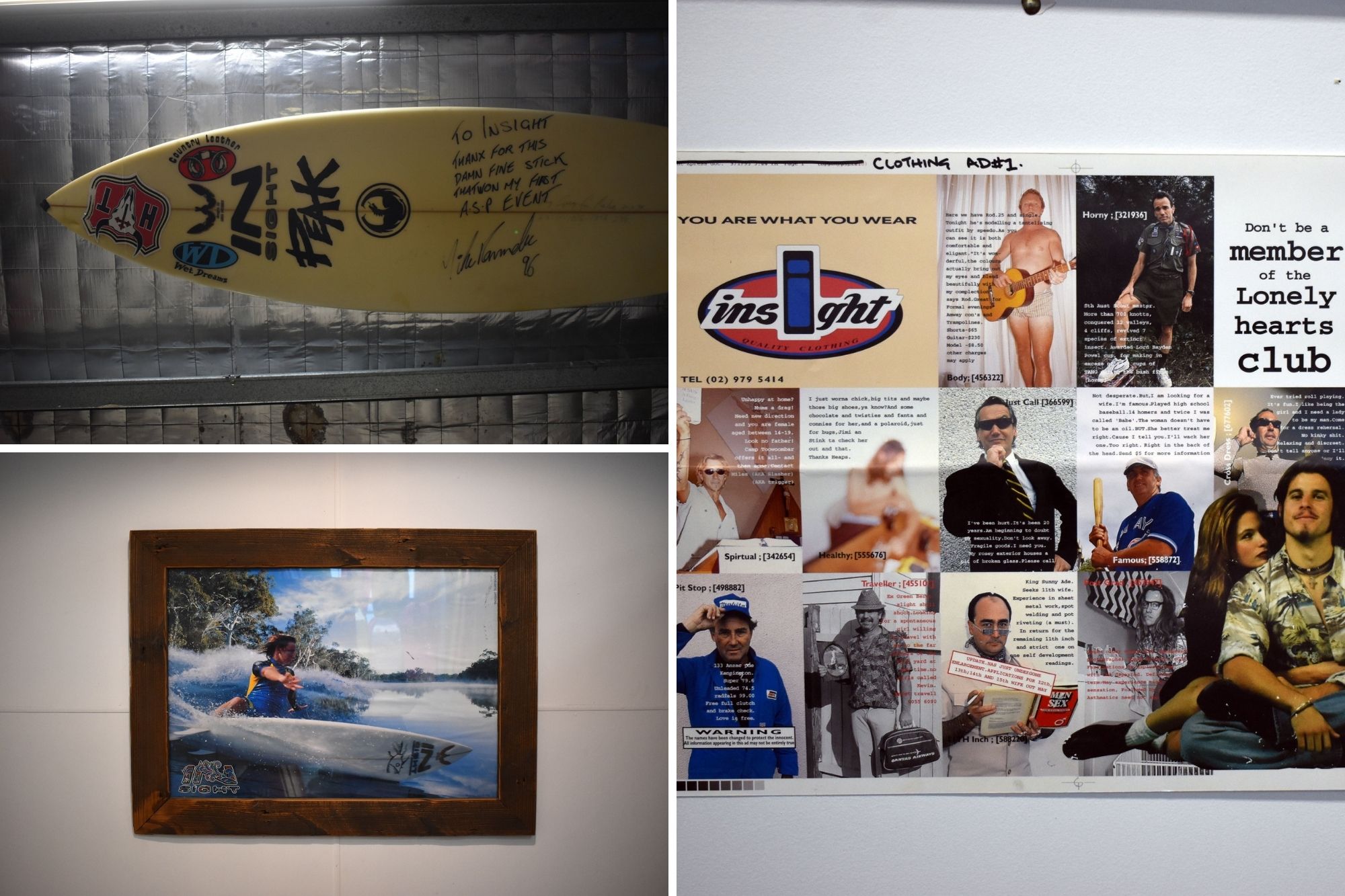
Photos: Steve Baccon
Outside of shaping machines, what’s the biggest difference between making boards 20 years ago and today?
First and foremost, outside of shaping machines that would be removable fins. That was a game changer indeed! Then, of course, there is board technology. There have been so many different technologies to come through over the years, which is always great to see. People are so interested in building the best boards with the best materials, it’s exciting. The only technology I’m not into is when someone calls me and says, “I can make a board that is unbreakable!” I always say, “Really? Thanks, but I love my staff and they need to pay their bills.”
What can you say about the role of glassers and sanders in your operation?
Many, many hands touch a surfboard, and they are all equally important in every step of production. They all have their skillset, and my guys are the best around. For sure, they make mistakes from time to time, but as I said, one surfboard is touched by six different sets of hands. When there is a mistake and a customer is blowing up, I remind them of this. Really, if you look at any surfboard, you will find some sort of blemish or mark, but that’s what you get with a handmade product.
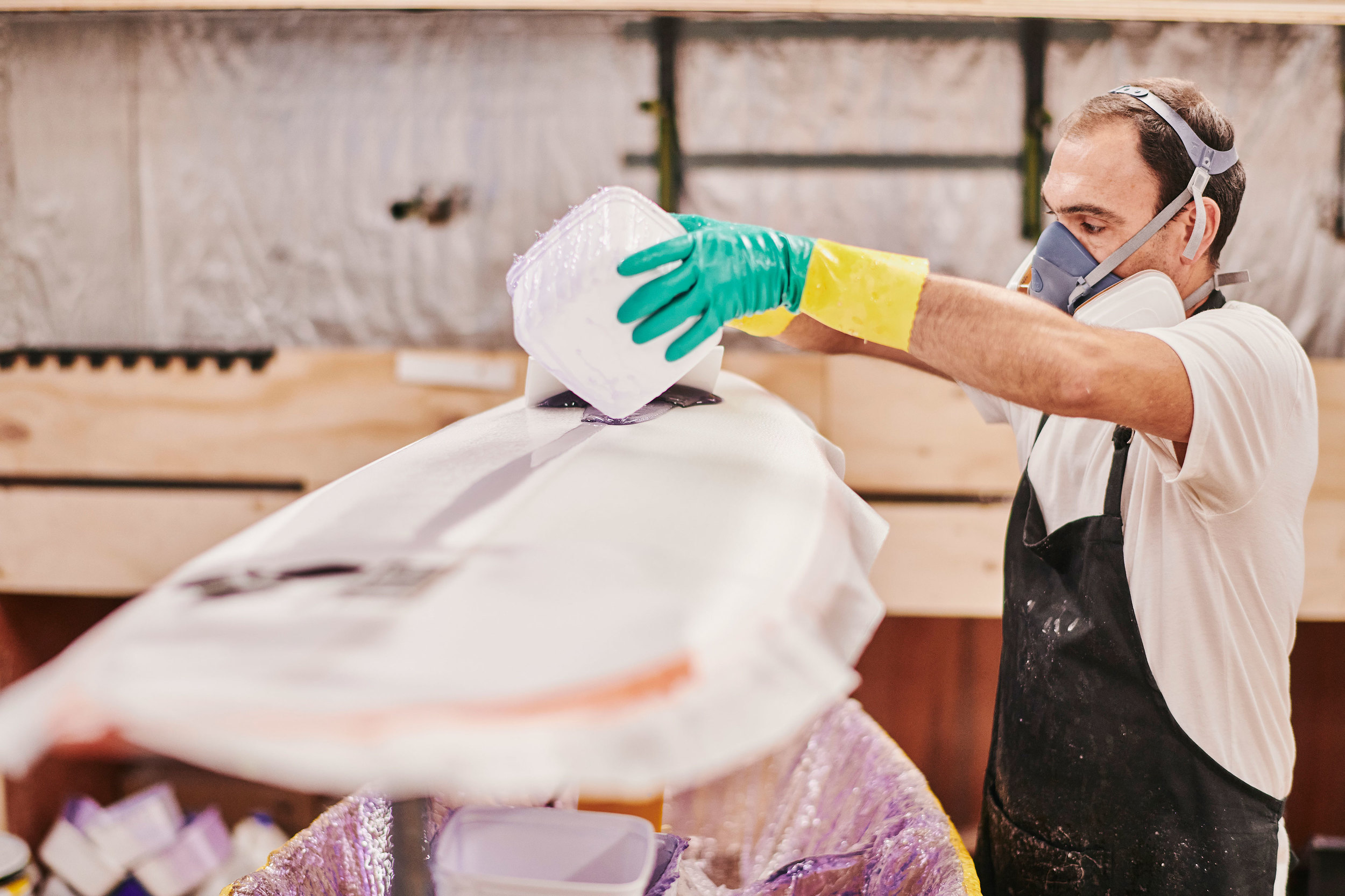
Photo: Onboard Industries
Got a favorite teamrider?
Well, this will get me in trouble [laughs]. I love all our teamriders, past and present, and we maintain relationships with them even if they leave one of our brands… But I’ll throw Kai Otton out there, we’ve been great mates for a long time, and he’s bloody hilarious! And he can surf, too!
Anything else?
The most important fact about Onboard is this: Drew and I have an incredible team working with us, and we would not be who we are today without them. Most of my staff has been with us for a long, long time, and we are all friends and have a bloody good laugh. I love all my boys! And I love the fact they we still manufacture in Australia. Good to keep this industry going and give the locals work.
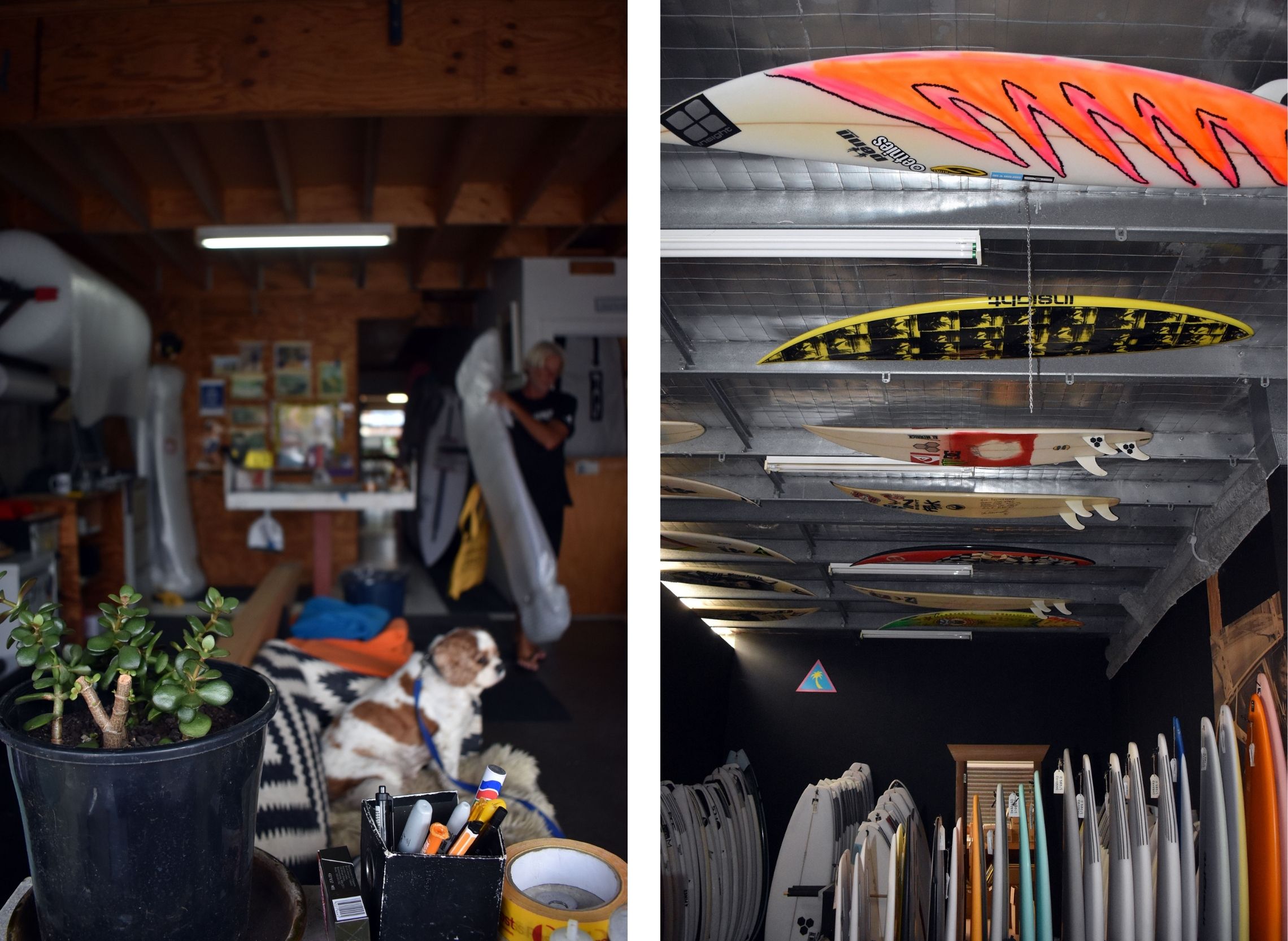
Onboard Industries
Owners: Andrew Down and Melanie Hayhoe
Location: Mona Vale, NSW, Australia
Production Area: 1,200 square meters
Website: http://onboardindustries.com.au
Store: https://www.onboardstore.com.au


